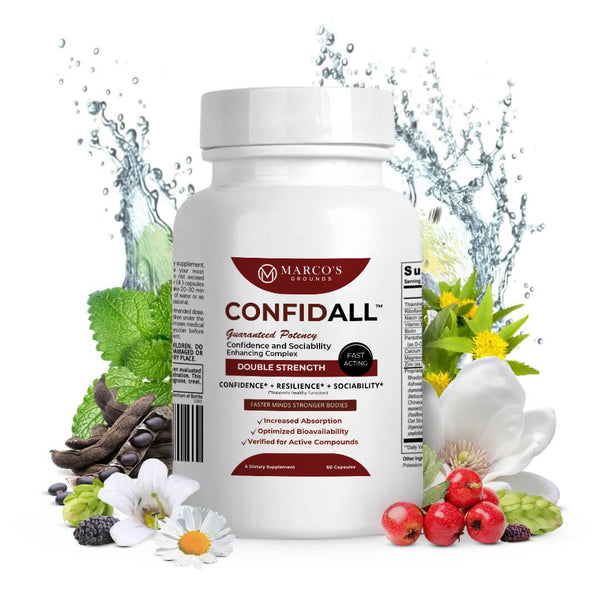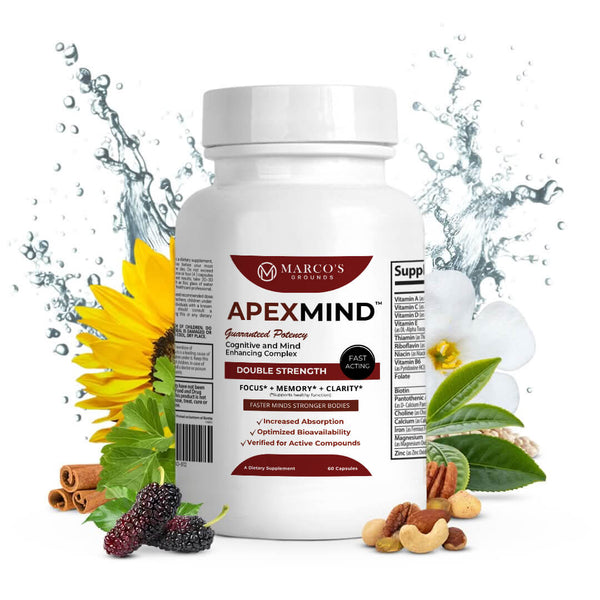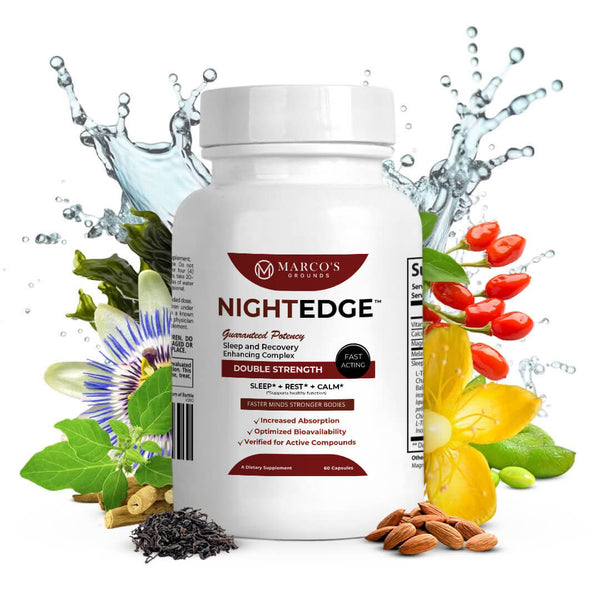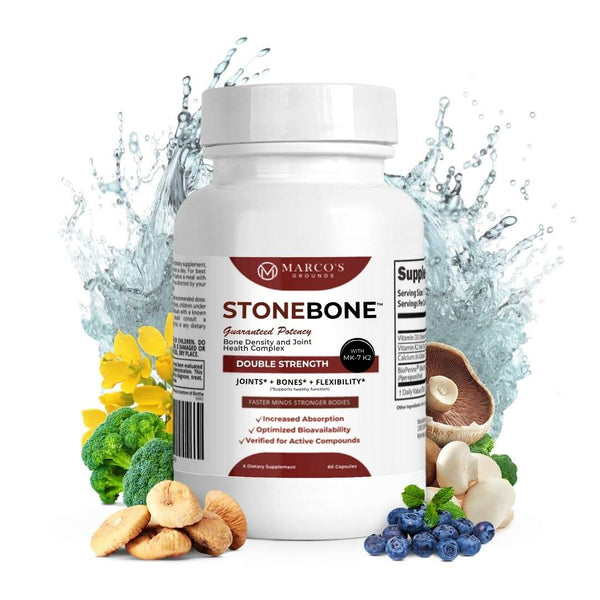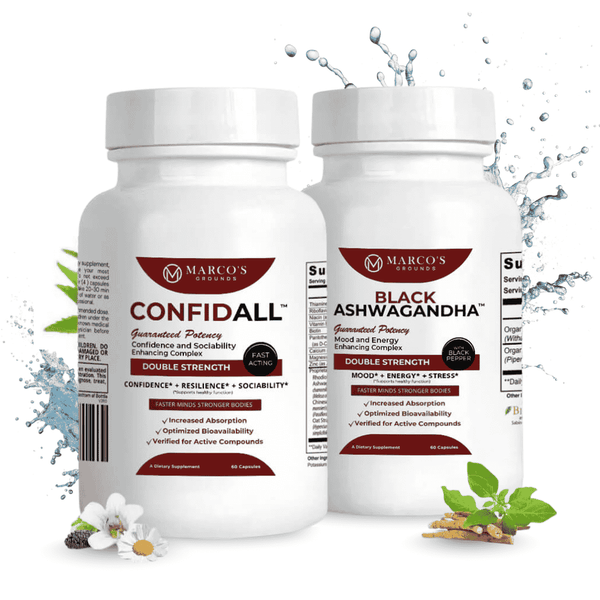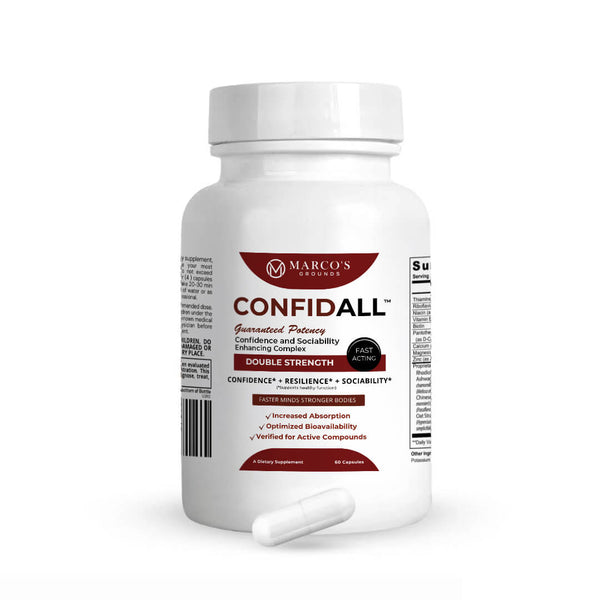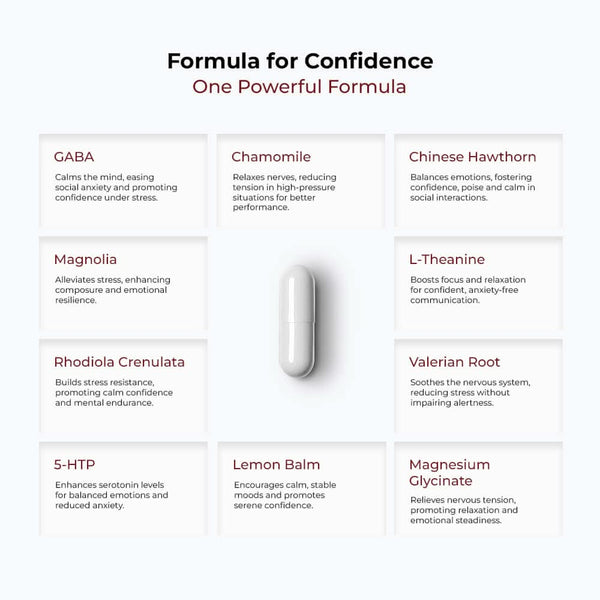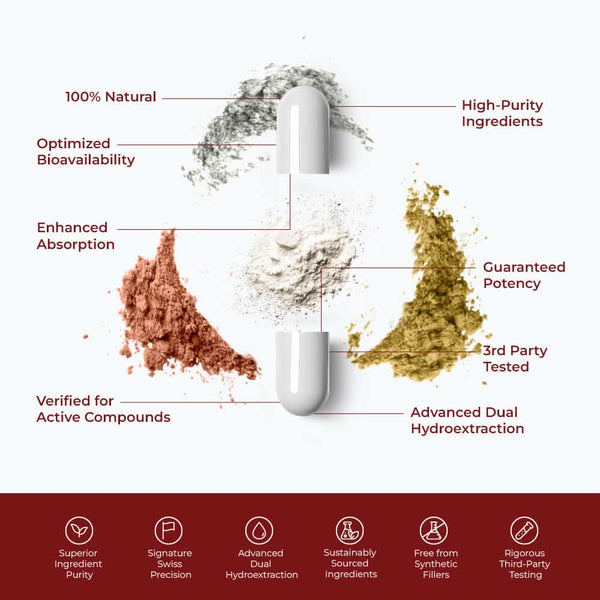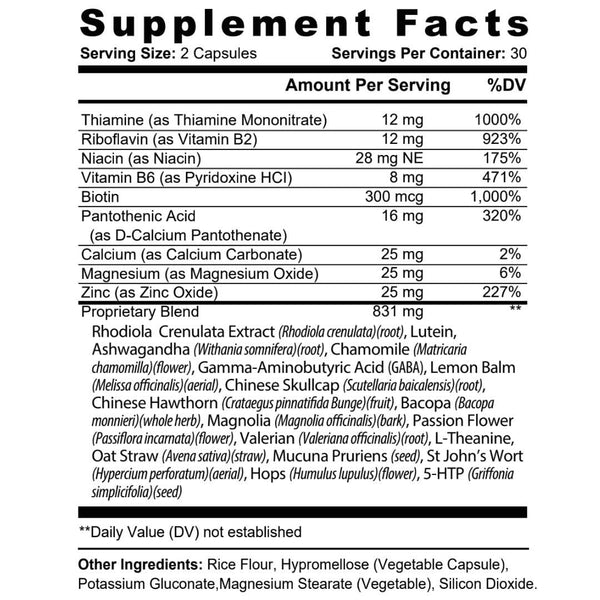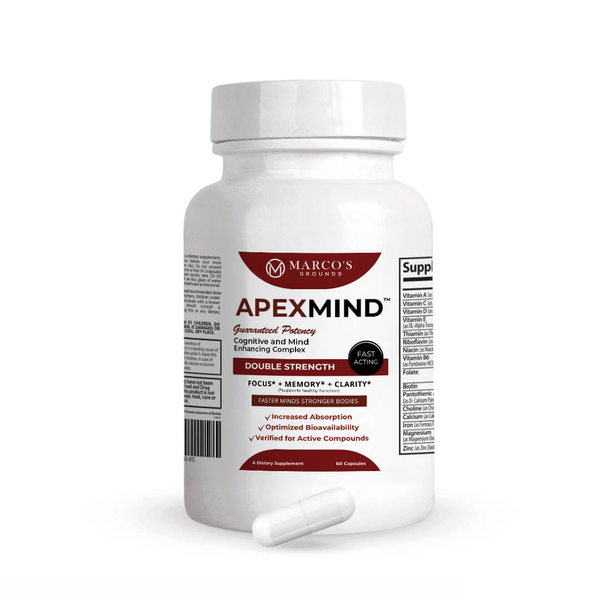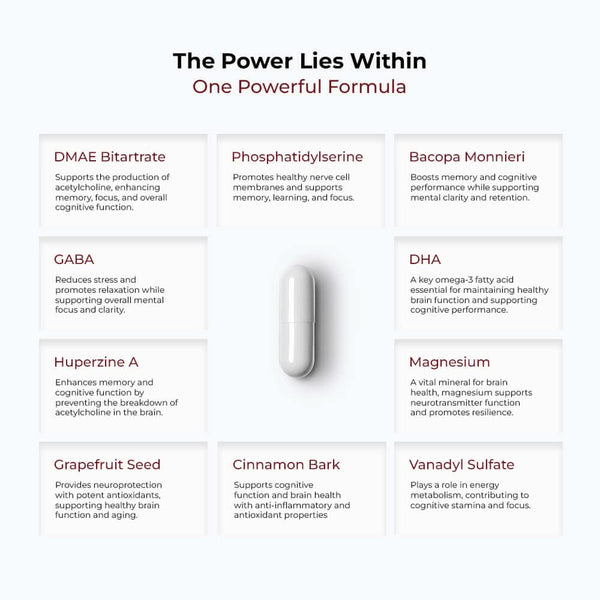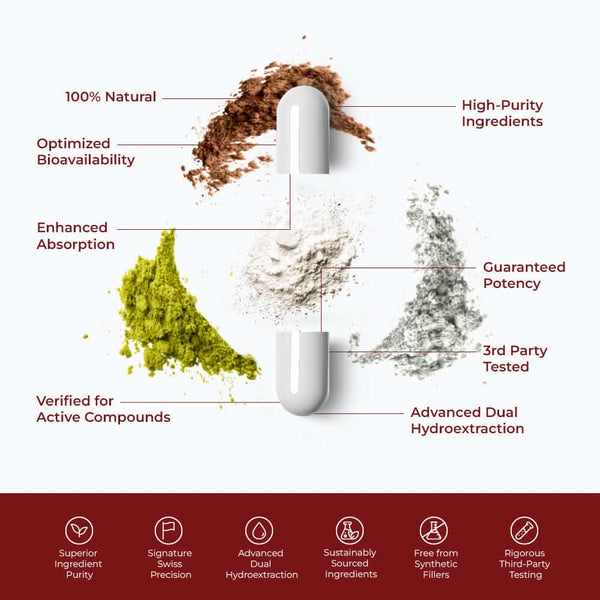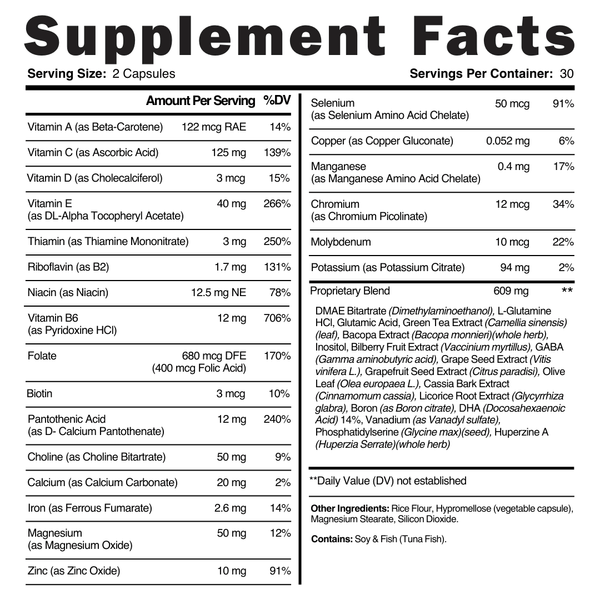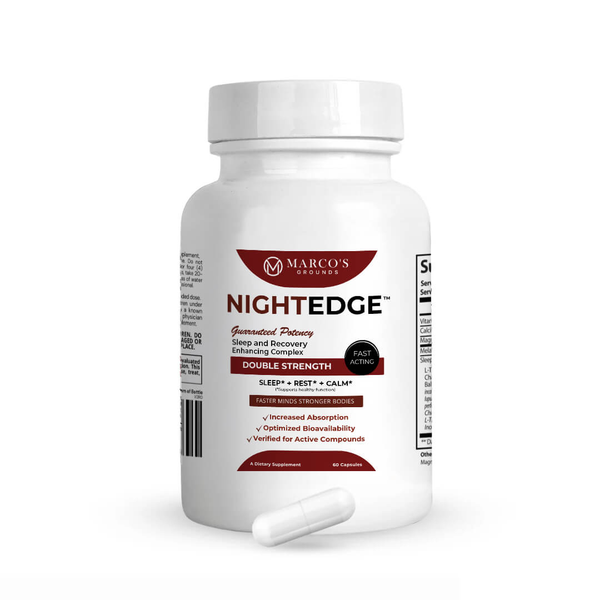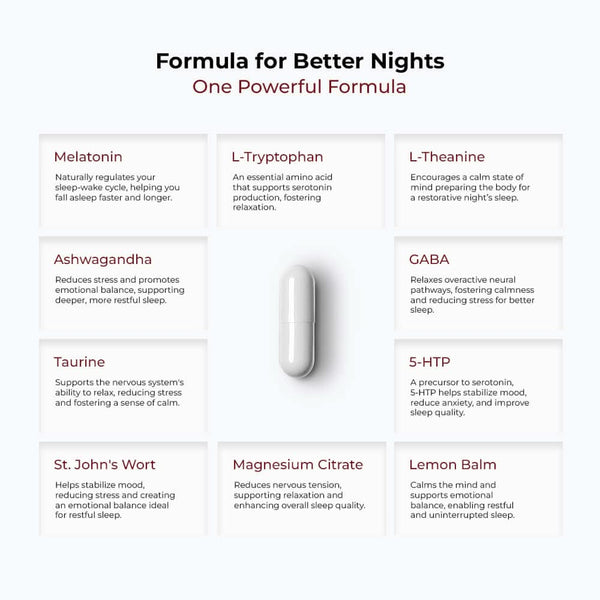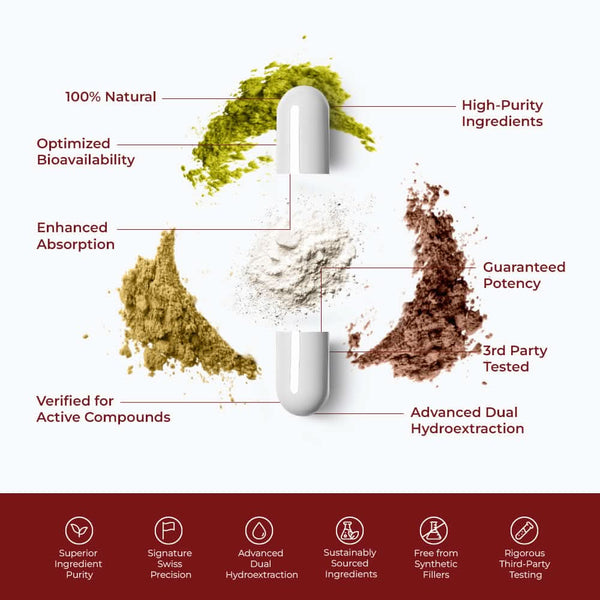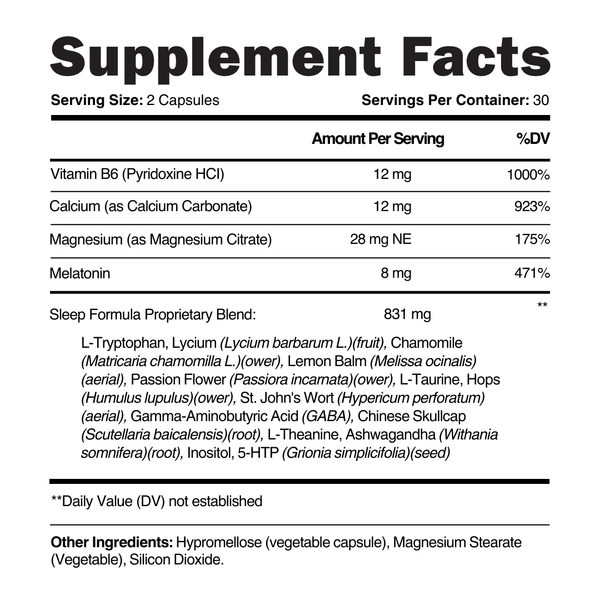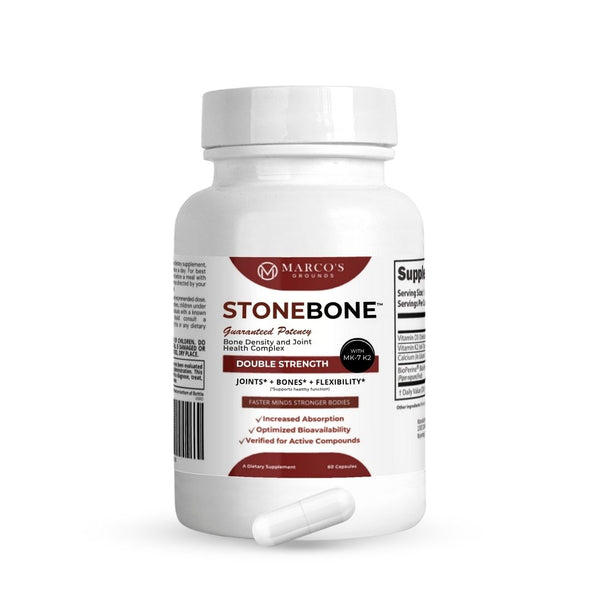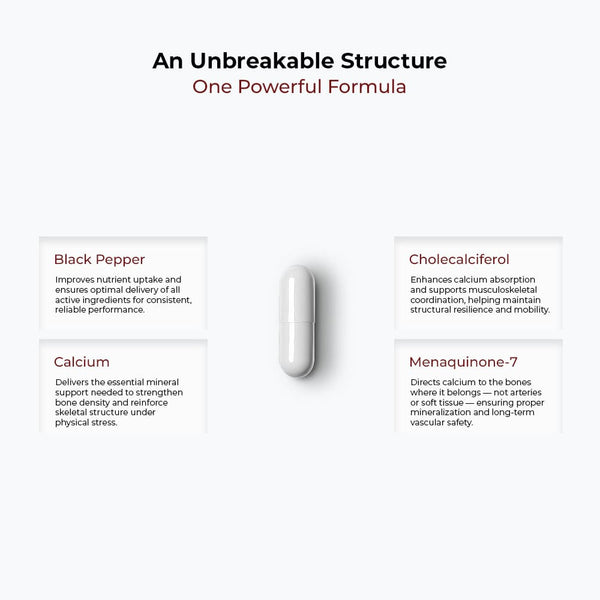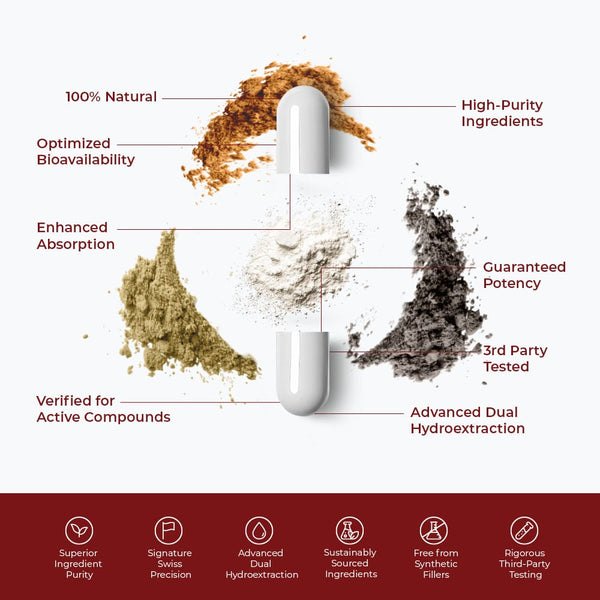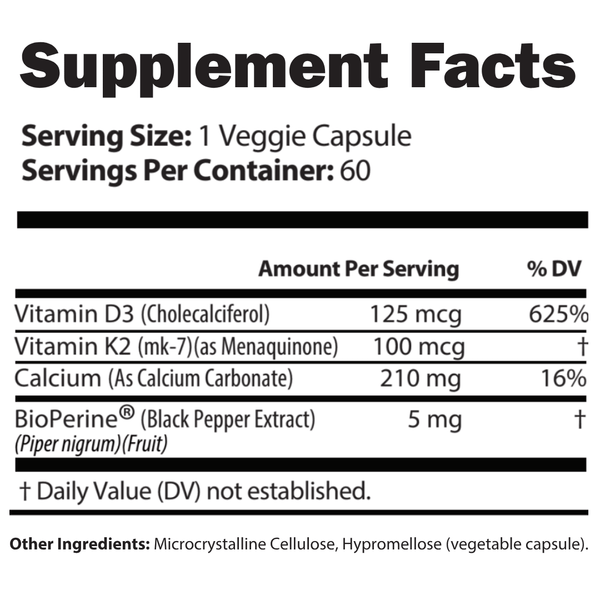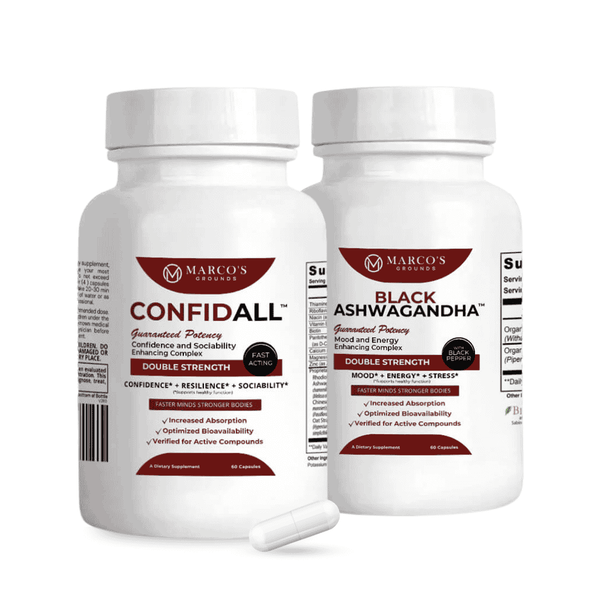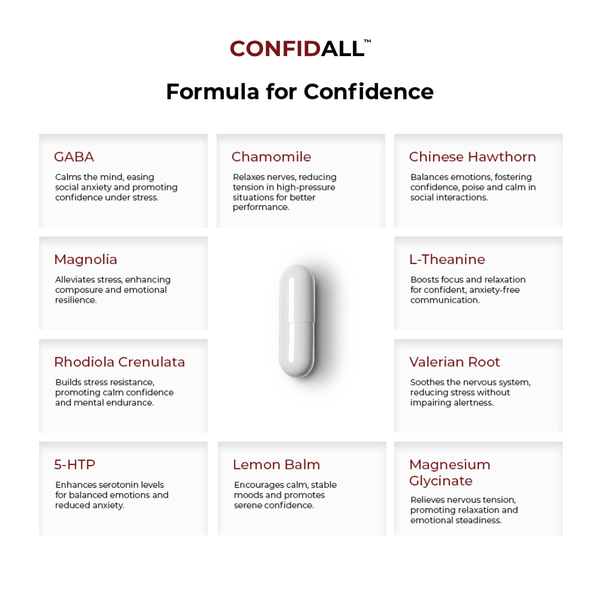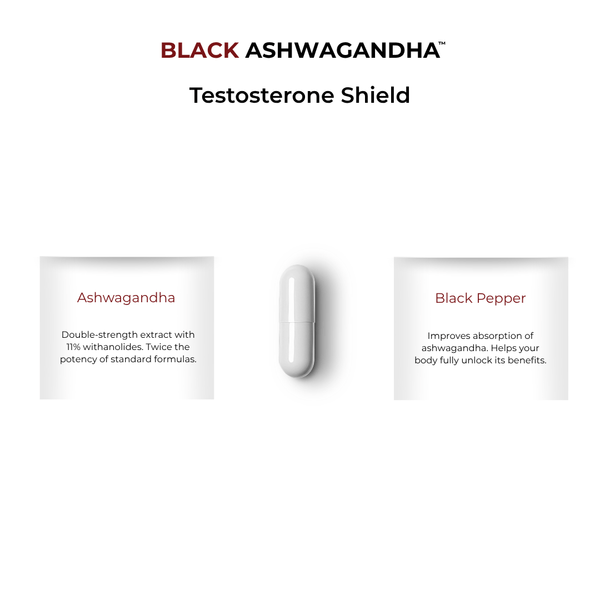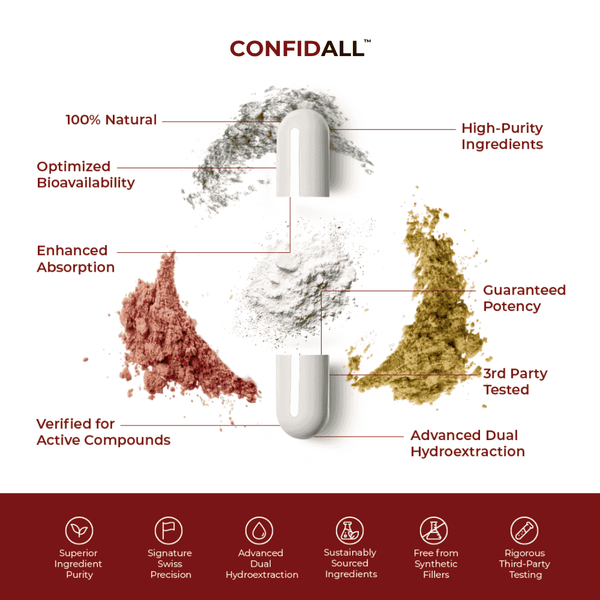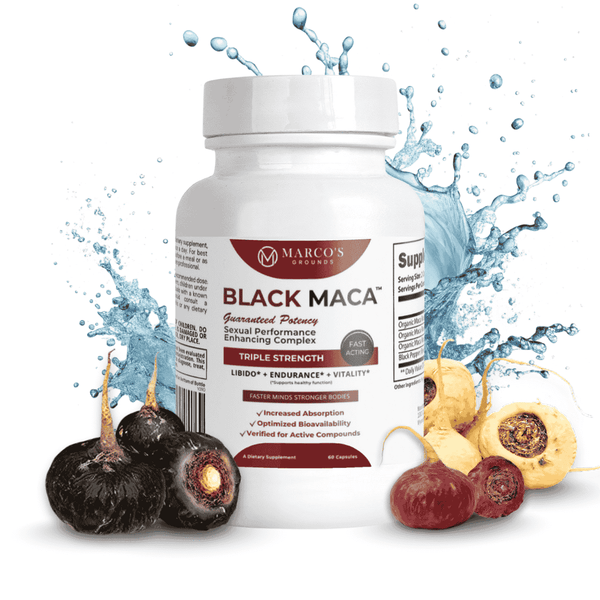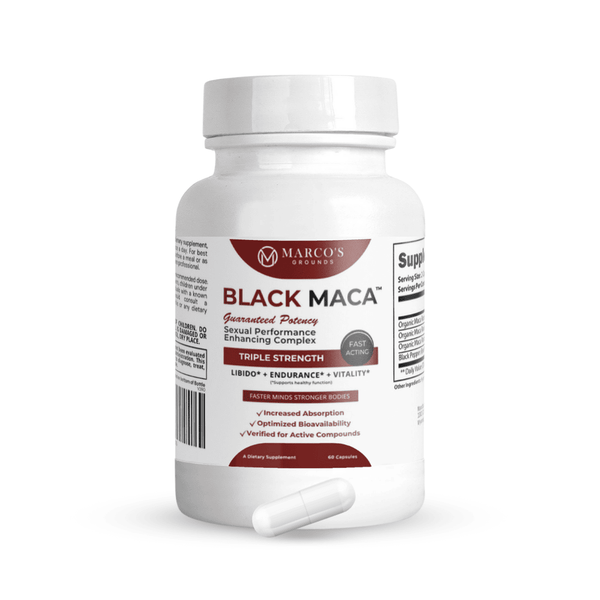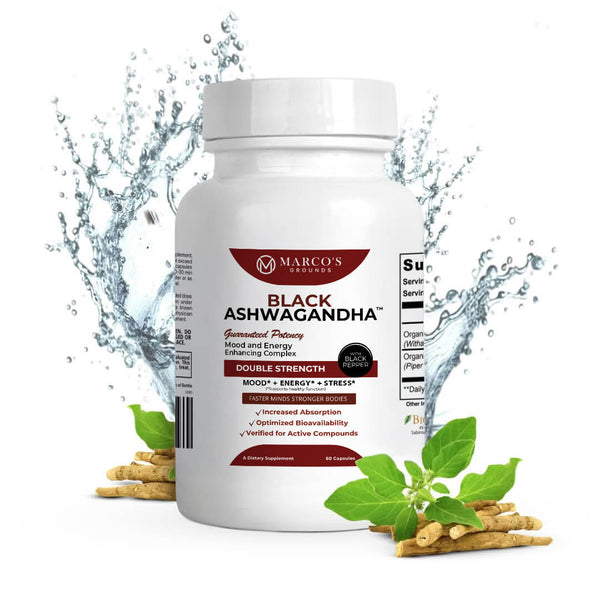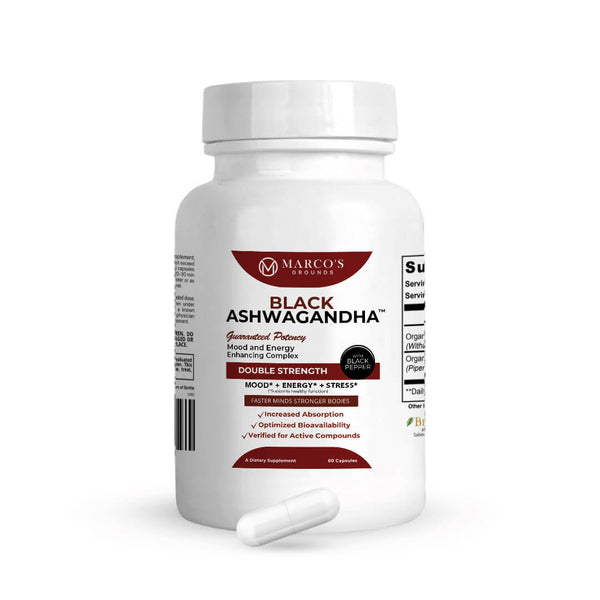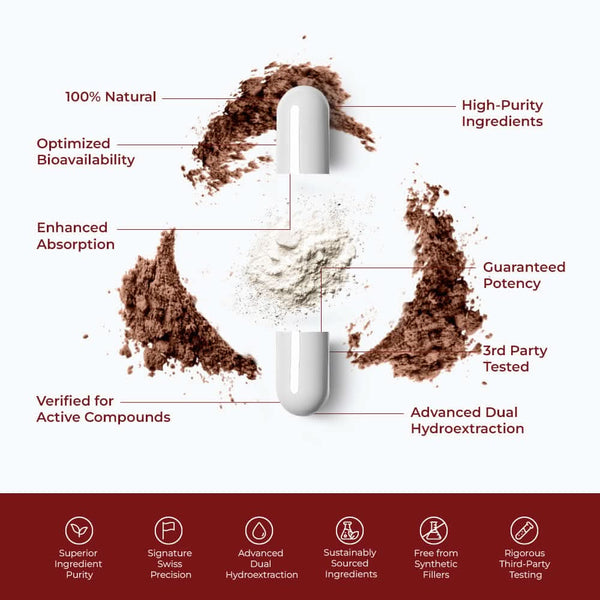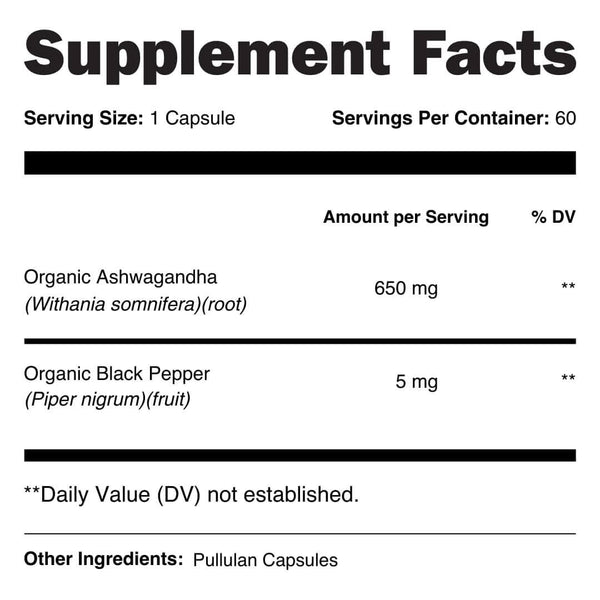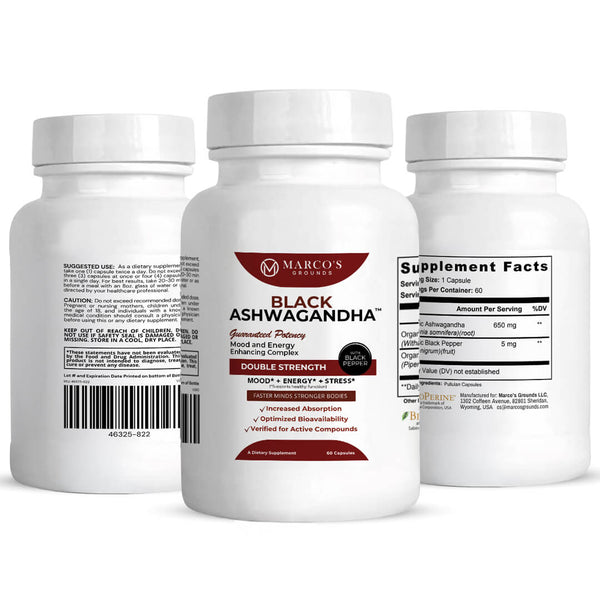Overview
Cinnamon bark, derived from the inner bark of Cinnamomum species, has been prized for centuries for its aromatic warmth and medicinal properties. Known for its role in supporting metabolic health, enhancing digestion, and providing potent antioxidant effects, cinnamon bark also supports mental clarity and sustained focus by helping regulate blood sugar and optimize energy metabolism—key foundations for sharp cognitive performance.
Other Common Names
- True Cinnamon
- Ceylon Cinnamon
- Cassia Cinnamon
Top Benefits
- Supports healthy blood sugar levels for balanced energy
- Provides antioxidant protection to support brain health
- Enhances digestion and nutrient absorption
- Promotes cardiovascular health
- Supports mental clarity and cognitive focus through stable glucose metabolism
What Is Cinnamon Bark?
Cinnamon bark comes from the inner layers of the Cinnamomum tree, which are carefully harvested, dried, and rolled into the familiar quills or ground into powder. Rich in bioactive compounds like cinnamaldehyde and polyphenols, cinnamon is renowned for its ability to regulate blood sugar, improve digestion, and reduce inflammation.
By stabilizing blood sugar and enhancing metabolic balance, cinnamon bark helps maintain a steady supply of glucose to the brain, which is essential for mental clarity, focus, and cognitive endurance. Used in Ayurvedic, Chinese, and traditional Western medicine, cinnamon bark continues to be a go-to remedy for metabolic and cognitive wellness.
Marco’s Grounds™ Cinnamon Bark Sourcing
At Marco’s Grounds™, we source our cinnamon bark from the fertile forests of Matale, Sri Lanka, a region renowned for producing the finest Ceylon cinnamon. The warm, humid climate and nutrient-rich soils of Matale create ideal conditions for cultivating cinnamon trees that yield premium-quality bark.
The bark is harvested using traditional methods, preserving the natural integrity of the plant. This careful sourcing guarantees the highest level of purity, safety, and potency in every batch.
Cinnamon Bark Dosing Principles and Rationale
Clinical studies recommend doses of 120 to 500 mg per day of cinnamon extract for metabolic and antioxidant benefits. Marco’s Grounds™ incorporates a precise dose of cinnamon bark extract into our formulations, adhering to hormetic dosing principles for optimal efficacy and safety.
Cinnamon Bark Key Mechanisms
1. Blood Sugar Regulation
- Enhances insulin sensitivity and glucose uptake in cells [1].
- Reduces postprandial blood sugar spikes, supporting metabolic balance [2].
2. Cardiovascular Support
- Lowers LDL cholesterol while maintaining or increasing HDL cholesterol [3].
- Improves blood flow by reducing arterial stiffness and promoting nitric oxide production [4].
3. Antioxidant and Anti-Inflammatory Effects
- Neutralizes free radicals, protecting cells from oxidative damage [5].
- Inhibits pro-inflammatory cytokines, promoting joint and immune health [6].
4. Immune Function
- Exhibits antimicrobial and antifungal properties, supporting overall immunity [7].
- Boosts the activity of immune cells, enhancing defense mechanisms [8].
Synergies with Other Marco’s Grounds™ Ingredients
-
Magnesium – Supports metabolic processes and helps balance the blood sugar-regulating properties of Cinnamon Bark.
-
Rhodiola Crenulata – Works together to reduce stress and support healthy metabolic function.
-
Vitamin B6 – Enhances Cinnamon Bark’s effects on glucose metabolism and energy production.
References
- Anderson, R. A., et al. (2004). Cinnamon improves glucose and lipids of people with type 2 diabetes. Diabetes Care, 27(12), 3214-3215.
- Khan, A., et al. (2003). Cinnamon improves glucose and lipids in patients with type 2 diabetes. Diabetes Care, 26(12), 3215-3218.
- Roussel, A. M., et al. (2009). Cinnamon and cardiovascular risk. Diabetes Research and Clinical Practice, 85(3), 341-346.
- Ziegenfuss, T. N., et al. (2006). Effects of water-soluble cinnamon extract on body composition and features of metabolic syndrome. Journal of the International Society of Sports Nutrition, 3(2), 45-53.
- Shan, B., et al. (2005). Antioxidant capacity of 26 spice extracts. Food Chemistry, 89(4), 555-561.
- Aggarwal, B. B., et al. (2006). Molecular targets of dietary agents for prevention and therapy of cancer. Biochemical Pharmacology, 71(10), 1397-1421.
- Matan, N., et al. (2006). Antimicrobial activity of cinnamon oil and its applicability in food preservation. Food Control, 17(1), 22-28.
- Singh, G., et al. (2007). Antimicrobial potential of cinnamon oil and its use as a food preservative. Journal of Food Science, 72(6), M300-M305.
